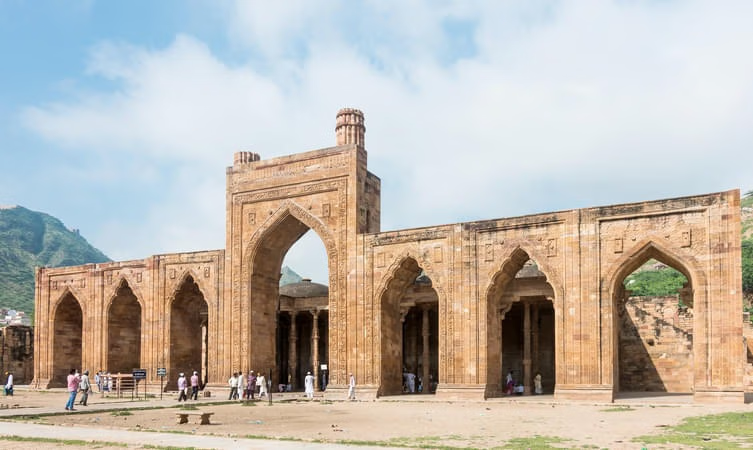Adhai-Din Ka Jhonpra is one of the most significant and oldest Islamic monuments in India, located in the historic city of Ajmer, Rajasthan. Renowned for its unique Indo-Islamic architecture, this ancient structure is a masterpiece that reflects the cultural and architectural amalgamation of Hindu, Jain, and Islamic styles. The name “Adhai-Din Ka Jhonpra” translates to “shed of two and a half days,” a title shrouded in mystery and local legend.
Historical Background
Originally built as a Sanskrit college in the 12th century during the reign of King Vigraharaja IV, the site was later converted into a mosque by Qutb-ud-Din Aibak, the first Sultan of Delhi and a general of Muhammad Ghori. After the conquest of Ajmer in 1192 CE, Aibak ordered the transformation of the existing structure into a mosque. According to legend, the mosque was constructed in just two and a half days, hence the name. However, historians believe that while some work was quickly done for the first Friday prayers, the complete structure took much longer to build.
Architectural Significance
Adhai-Din Ka Jhonpra is a stunning example of early Indo-Islamic architecture, blending Islamic calligraphy with Hindu and Jain motifs. The mosque’s façade features intricate carvings, floral patterns, and arabesque designs. The structure is supported by more than 100 elaborately carved pillars, many of which were repurposed from the original temple structure. Each pillar is unique, showcasing exquisite detailing that reflects the craftsmanship of Indian artisans.
The mosque has a grand arched screen with seven pointed arches, which was added later by Sultan Iltutmish in 1230 CE. Behind this screen lies the prayer hall with a beautifully carved mihrab (prayer niche) facing Mecca. The intricate latticework and floral motifs etched into the stone surfaces showcase the artistic excellence of that era.
Cultural Importance
Though it no longer functions as a mosque, Adhai-Din Ka Jhonpra remains a significant cultural and historical site. It is a symbol of India’s rich and diverse heritage where multiple religious and architectural traditions have coexisted and influenced each other. The monument is protected by the Archaeological Survey of India and attracts tourists, historians, and architecture enthusiasts from across the globe.
Visiting Information
Adhai-Din Ka Jhonpra is located just outside the Dargah Sharif of Khwaja Moinuddin Chishti, making it a convenient stop for pilgrims and tourists alike. Entry is free, and it is open from sunrise to sunset. The best time to visit is during the cooler months from October to March.
In conclusion, Adhai-Din Ka Jhonpra is not just a historical structure but a testament to India’s complex and layered past. It stands as a silent yet eloquent witness to centuries of cultural evolution and architectural brilliance.
